Sleeping Loft
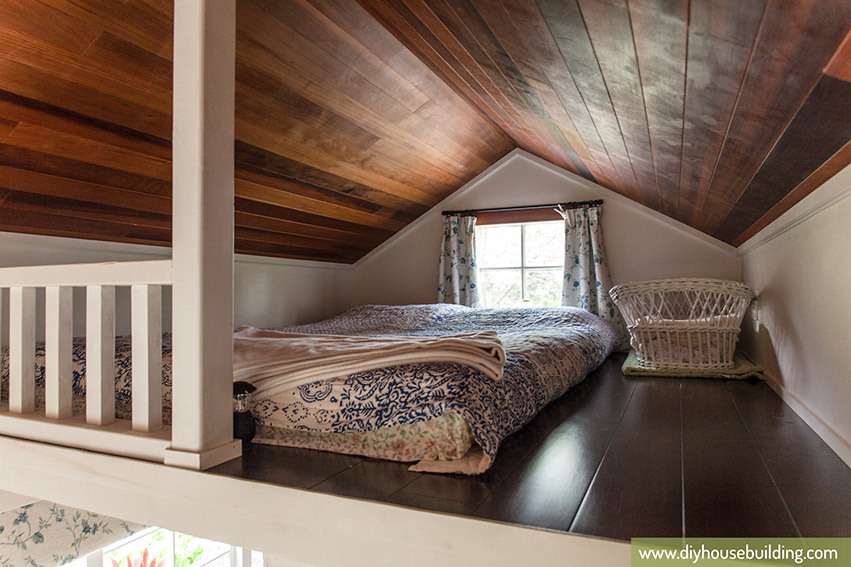
There are at least 5 different ways to configure a sleeping space in a tiny house:
- Sleeping loft
- Ordinary bed
- Murphy bed
- Trundle bed
- Convertible seating
Sleeping loft
A sleeping loft is generally a high platform, above head height, but which itself has a low ceiling. The sleeping loft shouldn't be thought of as a bedroom; it's more like a bed. You can't stand up it in, but how often do you stand up on your bed? I have seen another configuration, where the "loft" is about 1 metre off the floor, with the sleeping area underneath and a living area on top. Almost an upside down loft.
The advantages of a loft are that you get more floor space on the ground floor, you have a dedicated sleeping area. You don't have to fold up or put away your bedding every day. It's also fairly private, but you have to build your roof higher to have room for the loft.
 Upstairs sleeping loft
www.diyhousebuilding.com
Upstairs sleeping loft
www.diyhousebuilding.com
Ordinary bed
Some houses have more or less an ordinary bed, either in a small bedroom, or just a nook. Usually there will be no space to walk around the bed - it will be surrounded by walls on three sides.
The advantages of this are that you don't have to climb any ladders or stairs, and you don't have to fold up or put away your bed every day. The downside is that you give up several square metres of floor space.
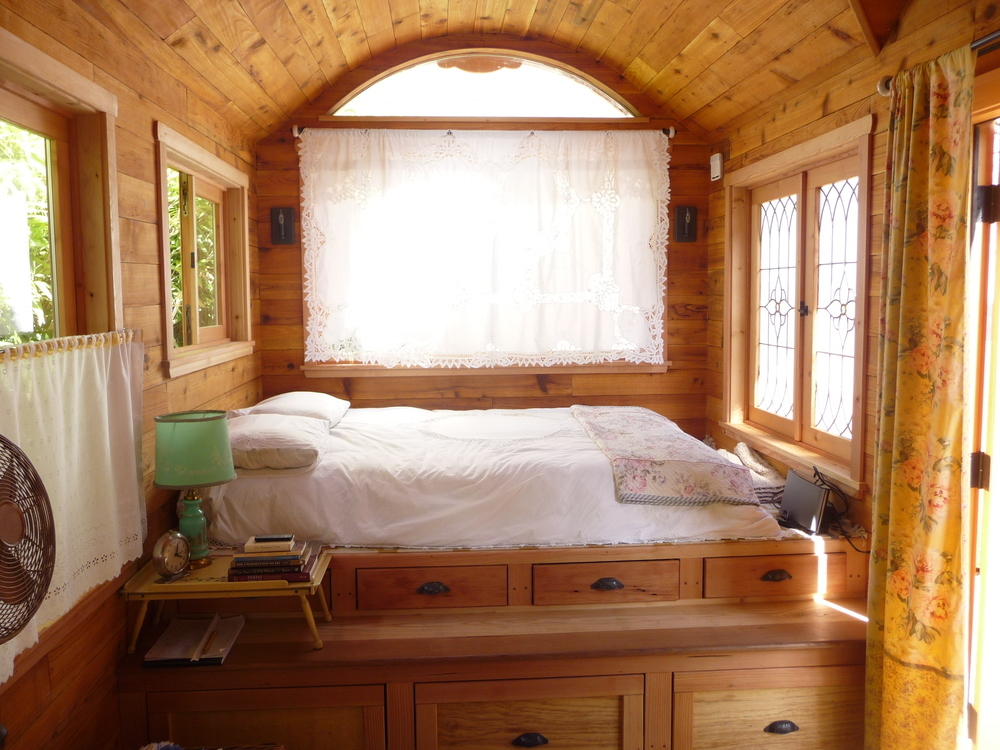 Ordinary bed on the ground floor
www.zylvardos.com
Ordinary bed on the ground floor
www.zylvardos.com
Murphy bed
This flips up against a wall when not in use, giving you the use of the floor space during the day.
You have more space during the day, and some even have desks or tables mounted underneath, making them multi-purpose. But if you just flip up a bed, all the bedclothes fall off. You either need to take them off and put them somewhere, and remake the bed each night, or make the bed up and use straps to hold the linen on while the bed is folded up. You also have to fold your bed up and down each day.
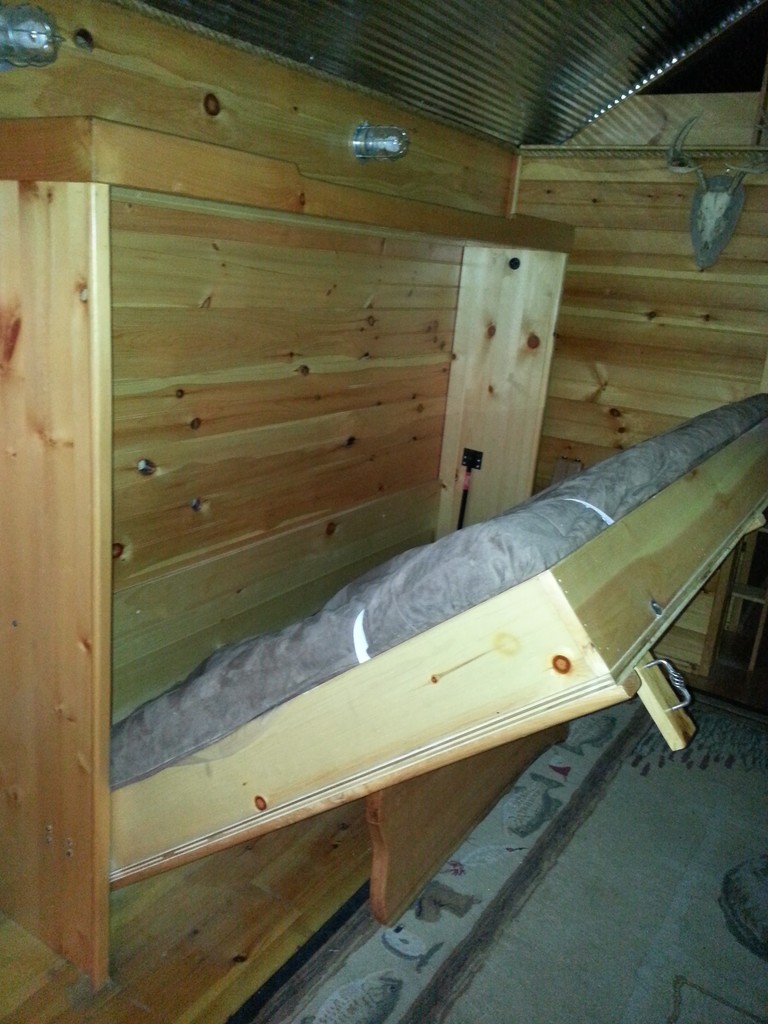 Murphy bed folding down from the
www.lovetinyhouses.com
Murphy bed folding down from the
www.lovetinyhouses.com
Trundle bed
A trundle bed is on ground level, and slides away under a floor during the day. Part of it can still protrude and be used as seating. You get the benefit of more usable floor space, plus not having to strap up your bedding, and of course, not having to build such a high ceiling or any stairs.
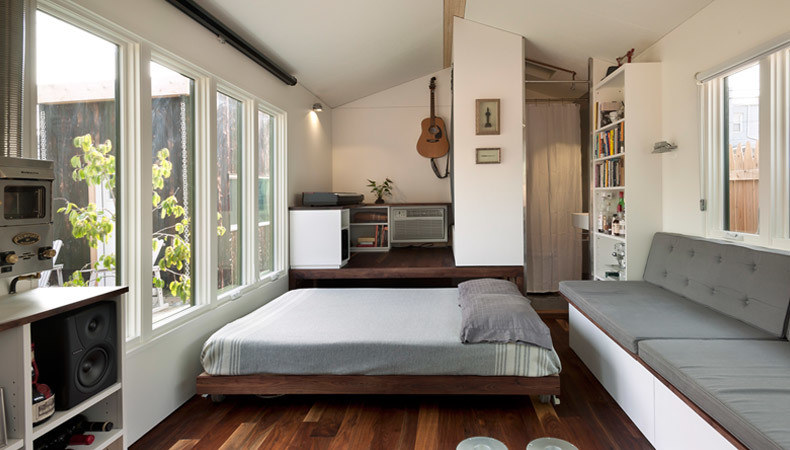 Bed pulls out from space underneath a raised floor platform
minimhomes.com/photos
Bed pulls out from space underneath a raised floor platform
minimhomes.com/photos
Convertible seating
A sofa that folds out to a bed, or build in seating/table that turns into a bed (a la caravan) are other options for a tiny house. These are generally less comfortable than a proper mattress, and require doing the conversion every night and morning.
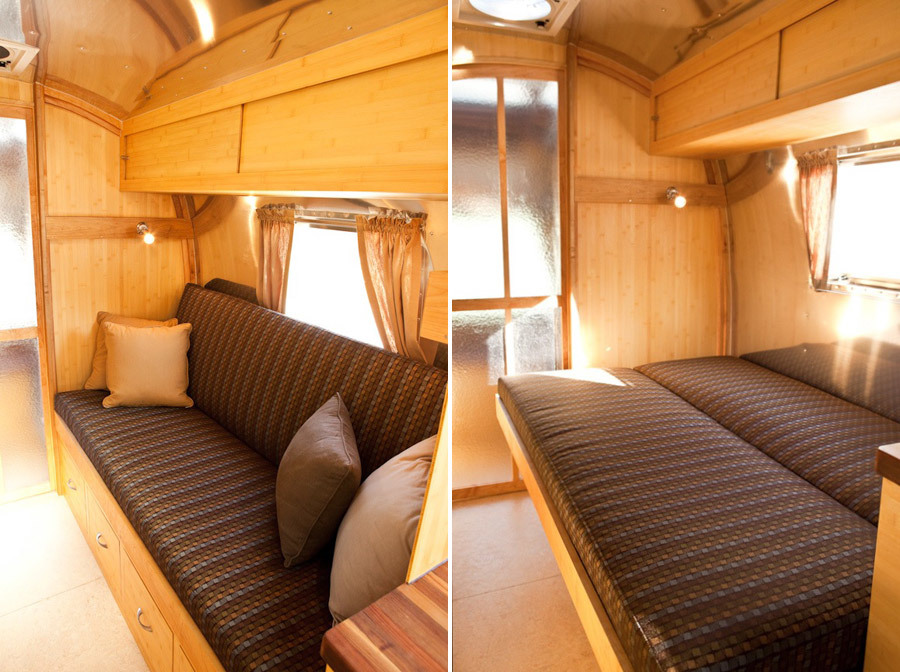 Built in couch that folds down into a bed
www.newprairieconstruction.com
Built in couch that folds down into a bed
www.newprairieconstruction.com
My choice is a loft
I think good sleep is important, and I don't sleep well on uneven or hard surfaces. I spend at least one third of my life asleep, so I do want that time to be comfortable and good for me. I prefer a good supportive mattress, so that rules out the convertible seating option. It might be useful to have one for a guest bed.
The Murphy bed style also tends to have lighter, thinner mattresses. I also don't like the idea of having to make my bed and strap it up and fold it up every morning. Nor having to fold it out and unstrap it when I'm tired and just want to sleep. Plus, I'd have to clear out the area under it each night, making that space less useful.
A dedicated bed on the ground floor would be good, but is very hard to fit in 2.4m wide. Most of the tiny houses with this feature are wider models. I also would prefer my bed be a little bit more private. I don't really want it to be part of the public seating area of the house either. That's also a mark against the trundle bed, which works best when partly exposed as seating. Otherwise, it takes a lot of floor space to be kept clear for rolling it up, and needs room beside it for stairs to access the raised platform above. It also seems to work more successfully in wider tiny homes.
What is left is a loft. I don't mind the idea of sleeping above the living areas - it seems like it would be cozy and warm. I like that it would be quite private. I don't think it's a problem that you can't stand up - I don't stand up in bed generally. I don't get claustrophobic so I don't think the lower ceiling would be a problem in that respect.
My main issues would be to do with how to access it (I don't like ladders), but I think that is something that can be overcome with well designed stairs. I would value a little bit extra space downstairs so that I can have a little more room for visitors, and a little more space around me when I'm working. Since I work at home, I like to separate my work area from my sleeping area, so the loft helps me do that too.
To me, a loft evokes feelings of safety, privacy, warmth and comfort, just like the little forts and cubbies I used to build out of couch cushions and curl up in as a child.